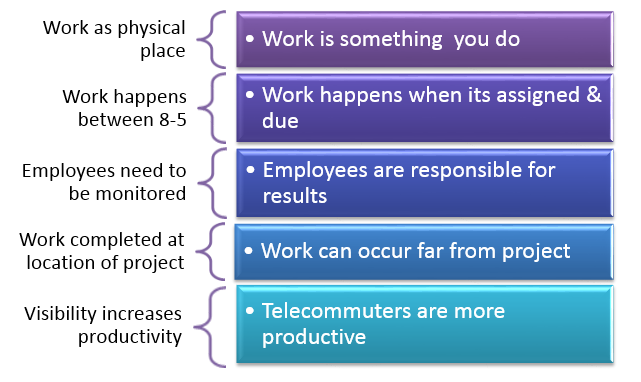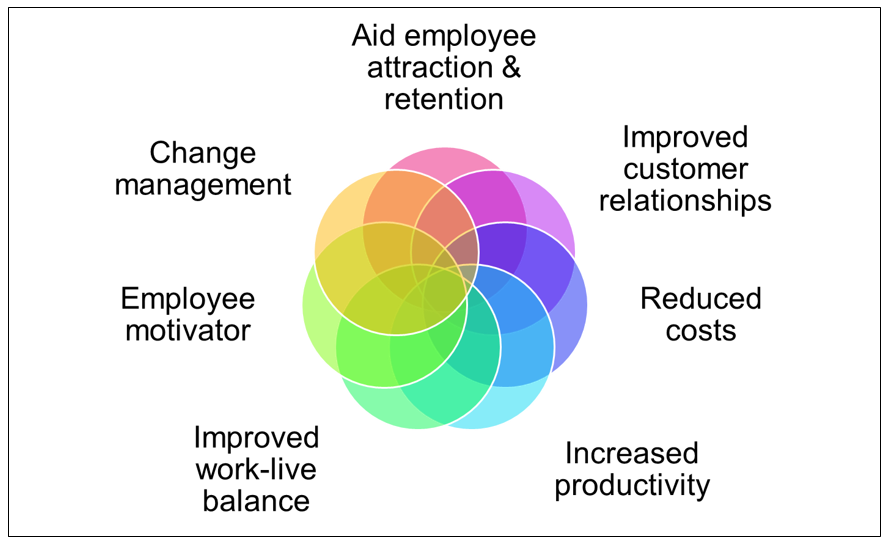When considering a change to an off-site vs. on site employee structure, how do you know if it is right for the company? Or how to you make the argument to executive management that it will be. Some of the argument involves a shift in how we define work. Also to consider, is how it can benefit the overall quality of service and costs to the organization. Following are some new ways to define “work” as well as arguments for the change.
First, companies that are not used to an off-site or virtual employee structure, may need to consider a through process change, in how they view and define work. In the book “Managing the Mobile Workforce”, by David Clemons and Michale Kroth, they discuss some of the old assumptions and new ways to look at how we define work. Some of those old assumptions are included on the left in the below diagram, with a new perspective on the right:

If you challenge these old assumptions, and are able to view them differently, you will find that many work roles could be moved to an off-site/teleworker structure.
We also should consider the benefits of going to a remote worker format when deciding if it is right for the company. Companies with a virtual (off-site) workforce realize a decrease in many costs such as office space, healthcare, travel, and employee retention. Also, employees are happier with an improved work life balance, and are more motivated and productive. It can also improve customer relationships by allowing employees to be closer to client locations, and can help with internal change management such as a change in company office location or work environment, since it will not impact remote employees as much.

The federal government has implemented an aggressive Teleworker plan over the past few years. They submit an annual report that you can find on telework.gov, which includes measured results. Some of the benefits they highlighted in their 2012 report include:
- 70% of managers and 80% of employees found that their productivity increased
- They saved over 2 million dollars in electricity costs
- They decreased their resignation rate by over 6%
Unless an employee has a position that requires physical location work, such as construction, or hospital patient care, etc., it is hard to not make the argument for a remote workforce structure. It allows companies to stay competitive, reduce costs, and hire and retain top talent.
by Jenny Douras
For more on Remote Employee Management,
take the online course at http://www.remoteemployeemanagement.com/
Or call for private group training 303-900-0850










